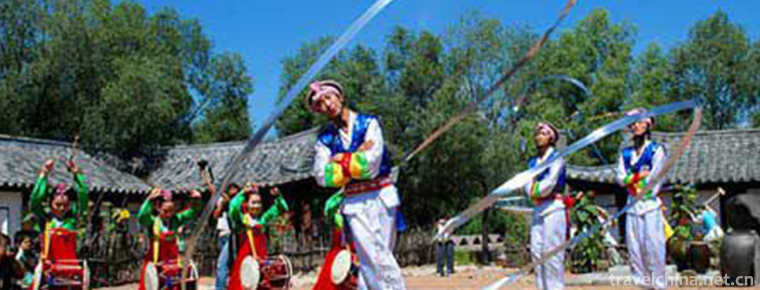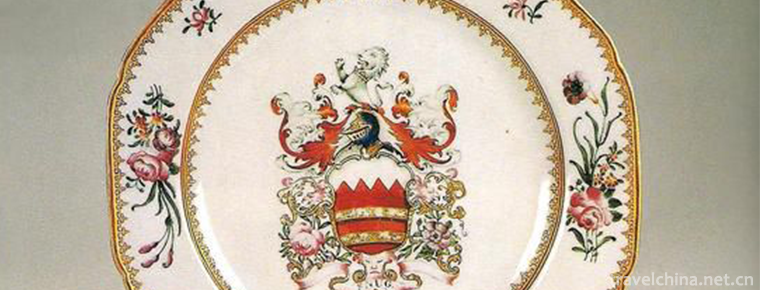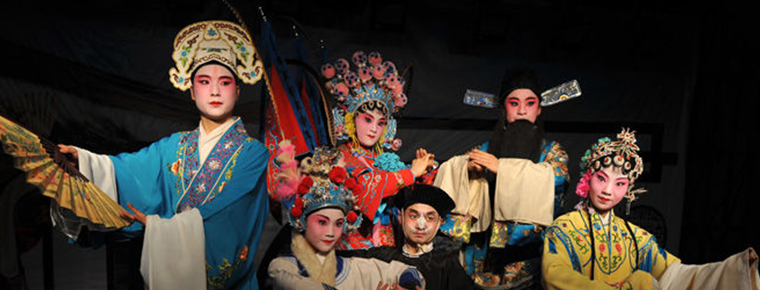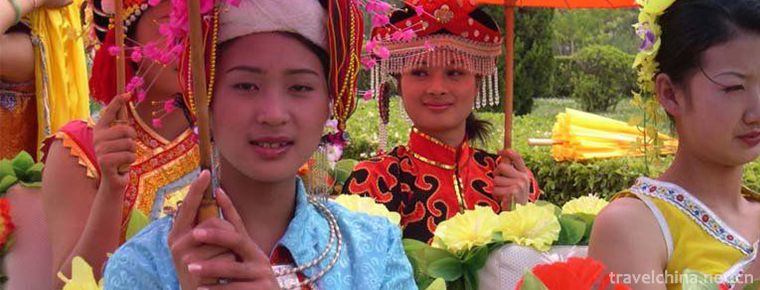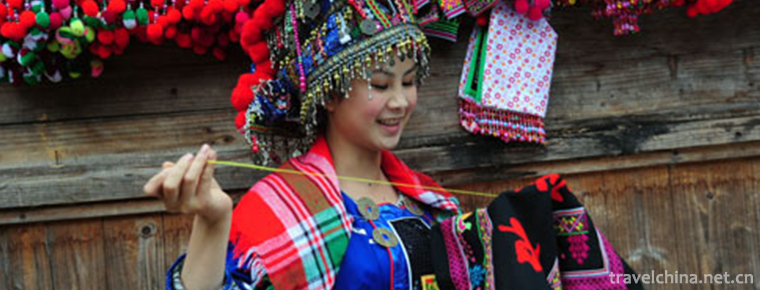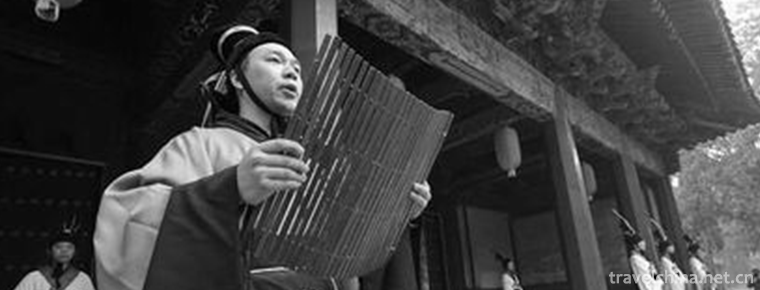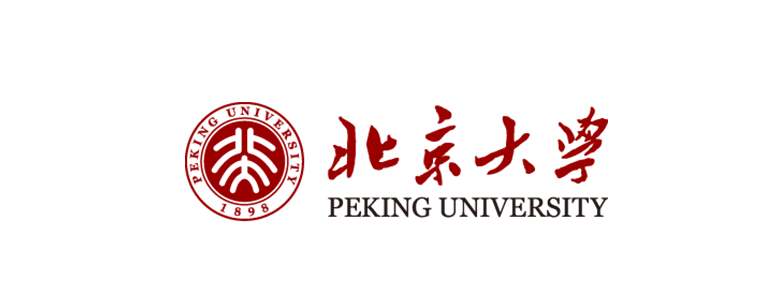72 Sorcery Music of Lingyun Zhuang Nationality
72 Sorcery Music of Lingyun Zhuang Nationality
The 72 witchcraft tunes of Lingyun Zhuang nationality originated in Lingyun County, Guangxi, mainly centered on Sicheng Town, where the county government is located. It is a tune sung by the Zhuang witches in Sicheng Town, Lingyun County, during witchcraft activities. It was widely spread in Lingyun County.
Heritage Information
Areas: Lingyun County, Guangxi
Heritage Name: 72 Sorcery Music of Lingyun Zhuang Nationality
Nature: The first batch of representative inheritors of intangible cultural heritage in Guangxi Zhuang Autonomous Region: Peng Baying and Tang Yuanming (female 1936.8)
Heritage No. 28
Declarator/Declarator: Lingyun County, Guangxi Zhuang Autonomous Region
Date of declaration: 2006
Heritage Level: Autonomous Region/Province
background information
Lingyun Zhuangs are descendants of the ancient Luoyue nationality, claiming to be Bulou and Buyi. Lingyun has a long history of organizational system, which was called Sicheng in ancient times. It has been an important town of state, government and county in past dynasties. In the long process of social development, Lingyun Zhuang women gradually formed 72 witch tunes of the Zhuang nationality in their long-term production and life in order to express their sorrow, alleviate their grief, avoid disasters and express their ideals. Sicheng has been the political, economic, cultural and trade center of Lingyun County since ancient times, but because of its high mountains and rocks, the environment for foreign exchange is relatively closed, which invisibly also provides space for some relatively primitive folk customs and beliefs. The witchcraft of Sicheng is still deeply rooted in Sicheng from ancient times till now, which has a lasting impact on the religious beliefs of the local people. Since there is no written record, it is impossible to know when Lingyun Sicheng witchcraft ceremony took shape. But at the beginning of the ceremony, egg divination was held in the same way as that recorded in Li Tiaoyuan's Notes of South Vietnam in the Qing Dynasty. Local legend Sicheng witchcraft ceremony has been formed for thousands of years, so it is not impossible. The local elderly can recall the old generation of "Bujin" 89 people, most of them have passed away, currently only one person Peng Baying. Peng Baying is old and sick, and seldom practices witchcraft. Although there are new "Bujin" in the local area, it is quite different from the old "Bujin", the main difference is the difference of witch song singing.
brief introduction
The music of "72 Sorcery Tunes" of the Zhuang nationality is a kind of sorcery song sung by the Sorceress of the Zhuang nationality at the ceremony. It is also called the theory of sorcery. The Zhuang language is called "Huanjing". It is mainly popular in Sicheng Town in Lingyun County, Baise City, Guangxi. Sicheng witchcraft song is mainly singing by single person, usually by female solo, sitting and singing in Zhuang language.
formation
It is generally believed that "seventy-two witchcraft tunes" are named after seventy-two songs of different tunes. Others believe that the title of each song in witchcraft tune corresponds to seventy-two natural phenomena or human landscapes one by one. The so-called correspondence is named after seventy-two cultural and natural attractions in Lingyun County in the Qing Dynasty: sowing Huai, daring flowers, Ke, Jingzhai, Hefan, Chang, even more mourning, although according to, receiving, adequacy, complementary bell, Guila, Hung Dingdu, poetry, line, long-Mala-year-old, supplementary province, reddish, langshu, cold-blooded, albeit calendar, Loula, bladder, enemy, can lane. Zhou Gong, although mourning, Ma Shou, Jiguan, Xue Guan, Lenglu, Liuxue, Banding, Henan, Neihong, Lamiao, Cunhua, Changwei, Baonuya name, tea oil, Kebu Kebian, Morong Moya, although Huahao, Butian, Lashan, Wenmiao, Lun Lei, Lunco, Quta, Changtang, many, Bataduan, Bailai, Lane. The names of these 72 scenic spots are all recorded in the Zhuang language in Chinese characters. They are the famous 72 "witches" (gods) in the area, because they are used by witches, so to speak, "list of witches". Because it is the tune sung by Shacheng witches in Lingyun County when they perform witchcraft activities, mainly when witches do things.
Singing form
When singing, the main music is the bell and footsteps. The witch holds a fan with copper bells in her left hand and a red handkerchief with copper bells in her right hand. The song and footsteps rise and fall together. When changing the tone, it constantly reflects different styles and personalities. Soft, fierce and scattered boards are more distinct. Especially scattered boards, they are as soft as clear streams, and as clouds drifting slowly on high mountains. The melody reflects the flexibility and vividness of nature.
Characteristic
The 72 sorcery tunes of Lingyun Zhuang nationality are mainly singing independently by a single person, and most of the lyrics are mainly narrated in Zhuang dialect, with mourning and praying. In the continuous integration and development, the 172 voodoo music has become more and more complex and beautiful, and finally formed 72 tunes. They are named after 72 human and natural scenic spots in Lingyun. Some tunes are graceful and gentle, some are angry and some are sad.
Sorcery Music Classification
Lingyun Zhuang 72 witchcraft music can be summarized and classified as "accompaniment" and "human voice" (singing).
(1) Accompaniment
According to the on-site investigation of the ceremony, Peng Baying used props in his hands, hit the ground with his feet, and echoes from the people who assisted in the ceremony constituted the "accompaniment music".
1. Percussion of musical instruments
The operator holds a silk fan and a square handkerchief with each hand, which can make a pleasant noise and fall with Kylin and copper bells. The silk fan of the left hand emits the sound of tinkling and tinkling constantly in the rhythm of the operator's body, just like the rhythm simulation of the running of the gods on horseback. With the simultaneous movement of the square handkerchief and the silk fan by the operator's hands, the simulated sound of "porn click" is emitted, which also announces the change of the ritual scene or the change of the character's identity, and plays a good role in rendering the prop sound.
2. Limb tapping
During the ceremony, Peng Baying's feet beat the ground alternately from beginning to end, and his hands beat with emphasis from time to time. His rhythm changes with the change of God's identity and scene during the ceremony. At this time, bystanders can feel the obvious symbols of transformation through the signal of rhythm, which is very consistent with the content of the ceremony.
3. Voice accompaniment
The ceremony of Lingyun Sicheng witchcraft song was attended by one person, assisted by many people. At the same time, relatives and friends of the witchcraft were also asked to be present. Therefore, in some part of the ceremony, there will be a short singing tune led by the host and echoed by all. This kind of irregular harmony is mostly the repetition of the last sentence of the song recited by the host, which has played the effect of echoing the content of the ceremony.
(two) vocal music
According to the analysis of 52 sorcery tunes collected at present, the "72 sorcery tunes" of Sicheng Lingyun are all sung by the voice, which can be divided into three types according to their characteristics: intonation, rhyme and intonation.
1. Intonation
In the "Moh" ceremony, "Bujin" and the wizard seekers used intonation when they understood the parties and events and predicted the prospects for the implementation of witchcraft. There are not many tones in this call, which often form the tones of front-light and back-heavy, front-heavy and back-empty, that is, the tones with rhythm but weak melody, which have very primitive linguistic factors. This tune is also used in the "Opening Song" of the "Sitting on the Altar" ceremony and in the communication between the host and the assistant. According to the convention, the "72 witchcraft tune" did not include this adjuster.
2. Rhyme and intonation
In the interview with Peng Baying and the data collected from her family, we analyzed that some of the tunes in "72 Sorcery Tunes" belong to rhyme. It is characterized by lyrics and melodies, rich rhythm and distinct sense of rhythm. There are both singers and crowds, which can be approximated to verbal, but also mixed with the melody of the singing paragraph, "please land" is one of the typical tunes.
3. Chant
Singing tune refers to songs of singing nature. The tune is stretching and high-pitched, suitable for singers to open their voice, even to the lyrics deduced in a cadence, the expression of music is a priority, and so on. In Lingyun Sicheng ritual witchcraft song "72 witchcraft tunes", there are many tunes with these characteristics, such as "Daring Flowers" (that is, "Water Cave"), "Three Emperors", "Academicians", "Cunhua" (Garden), and "Liuzhuangyuan" (OK). In the live singing and recording I heard, good voices and young people verified this, but in this case (see appendix), because Peng Baying's voice has declined, the tone used is relatively low.
Sorcery musical instruments
There are two main categories: still life and sounding objects. Stills refer to velvet fans, unicorns, phoenixes and sachets. The ringing objects refer to bells, copper beads and stubble.
When singing, the main music is the bell and foot sounds, with a copper bell fan in the left hand and a red handkerchief with copper bells in the right hand. The song, bell and foot sounds rise and fall together. When changing the tone, it constantly reflects different styles and personalities. Soft, fierce and scattered boards are distinct. Especially, flexible boards are like clear streams and slow-flowing clouds, reflecting the beauty and ingenuity of nature.
Inheritance mode
There are two ways of inheritance of the 72 witchcraft tunes of the Zhuang nationality, i.e. Yin inheritance and Yang inheritance: Yin inheritance and Yang inheritance.
1. Biography of Yin
The so-called "Yin" transmission is a kind of inheritance mode that does not learn from oneself, has no teacher and has special ability by possession of ghosts and gods. According to the Zhuangs'witchcraft, only those who are light in eight characters are likely to be chosen as substitutes by witchcraft gods. The so-called "Eight Characters" fatalism is a way of fortune-telling based on the four concepts of a person's birth year, month, day and time expressed in the form of Tiangan and Tianzhi. One of them is to divide the "eight characters" into light and heavy ones; people with "light life" are considered to be people who tend to be negative and are prone to ghosts and gods, or things that belong to the Yin are interlinked, and they are prone to attract various ghosts and gods to adorn themselves. It should be mentioned here that the inheritance of Lingyun witchcraft tune is not exactly the same as that of other Zhuangs. That is to say, its inheritance background is complex. It is said that there is no ancestral or teacher inheritance. The witchcraft is consciously chanted in a vague state acquired in a specific ritual ring and festival, so it is called "Yin Chuan" or "Shen Chuan". On-the-spot investigation found that at present, only Peng Baying, an old man in Lingyun County, can fully sing 72 witchcraft tunes and still engage in witchcraft occasionally. She grew up in Sicheng Town, Lingyun County, Guangxi. She never went to school because of her poor family background. She once worked as a part-time worker and worked as a cook in a unit. According to Huang Lingmin, a cultural Librarian in Lingyun County, when the old man was about 9 years old, he began to sing witchcraft tunes because of the possession of gods. After 16 years old, he was able to tell fortunes and relieve calamities for people, and got the true biography of 72 gods. He did not perform magical acts by singing, nor did he receive apprentices. Because of his old age, nowadays, witchcraft is seldom asked, even though the whole ceremony is relatively simplified, but the original record. Other wizards listed in the book have passed away.
2. Biography of Yang
The so-called "Yang" inheritance is a way of inheritance through learning from others. It is a specific change in the inheritance of Lingyun 72 witch tune compared with the past folk "Yin" inheritance. Nowadays, apart from Peng Baying, an old man of Yin, only Huang Lanfen of Baise Cultural Bureau and Tang Yuanming, a resident of Lingyun County, can sing witchcraft tunes. Huang Lanfen, formerly the curator of Lingyun County Cultural Museum, said that since her aunt herself was a witch, she had contact with 72 witchcraft tunes since childhood and was gradually attracted by its beautiful melody. Tang Yuanming dropped out in the third grade of primary school. She herself does not believe in witches. She loves folk art very much when she was young. When she was young, she participated in training courses for minority singers. Tang Yuanming began to learn to sing witchcraft when she was seven or eight years old. At that time, because her aunt was a witch worshiper, she often invited witches to come home for practice, so she was contacted. In addition, when Tang Yuanming was young, he often followed the old man to see witches and do witches. When he came back, he taught himself how to sing.
Religious connotation
Sicheng witchcraft songs come from primitive witchcraft and belong to the content of primitive witchcraft with traces of matriarchal clan. They illusory the idea that all living things have souls, beautify the spirituality of all living things, respect the survival of all living things, attach psychological sustenance to themselves, so as to get self-protection and comfort. Most of the people who come to witches to do their deeds are fortune telling and disaster relief. It is embodied in the folk patriarchal matters represented by female "ceremonialists". The preservation of this form of witchcraft not only enriches the genre of Chinese folk music, but also provides an important historical basis for the study of Zhuang culture. In addition, 72 witch tune music has mysterious color that modern science can not explain, such as burning incense and setting up altars, singing witch songs and doing things, can change various accents and languages in a trance state, ask and answer, and talk with the dead, so that the living can understand the situation of the dead in the underworld.

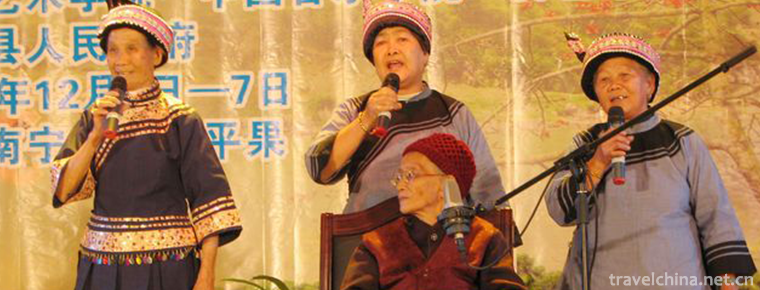
-
Mixed Congee
Eight treasures, also known as Laba porridge, porridge, Chinese traditional festival food. It is a gruel made from a variety of ingredients in Laba. Chinese scholars in the Southern Song Dynasty.
Views: 222 Time 2018-11-02 -
Eight Immortals Crossing the Sea Scenic Area
Eight Immortals Crossing the Sea Scenic Area, also known as Eight Immortals Crossing the Sea and Eight Immortals Crossing the Haikou, is situated on the shore of the North Yellow Sea in Penglai City.
Views: 209 Time 2018-12-23 -
Great Wall of Ming Dynasty in Datong County
According to documents, the Great Wall of Qinghai Province in the Ming Dynasty was built in the middle of the Ming Dynasty. It lasted 51 years from 1546 to 1596..
Views: 160 Time 2019-01-07 -
Zhangye Danxia National Geological Park
Zhangye Danxia National Geological Park is the only Danxia landform and color hilly landscape complex area in China. Located at the northern foot of Qilian Mountains, 30 kilometers south of Linze Coun.
Views: 186 Time 2019-03-16 -
Korean Agricultural Music and Dance
"Agricultural Music and Dance" is commonly known as "Agricultural Music", which is spread in the Korean community of Jilin Province, Heilongjiang Province, Liaoning Province .
Views: 146 Time 2019-04-16 -
Firing Techniques of Guangcai Porcelain
Guangcai Porcelain Firing Technology, a local traditional handicraft in Guangzhou, Guangdong Province, is one of the national intangible cultural heritages..
Views: 84 Time 2019-05-01 -
Jinghe Opera
Jinghe Opera, a local traditional drama in Lixian County, Hunan Province, is one of the national intangible cultural heritage..
Views: 186 Time 2019-05-08 -
Nu Fairy Festival
Fairy Festival is a traditional folk festival of Nu people in Gongshan area of Yunnan Province. The local flower festival, also known as the Flower Festival, is held on March 15 of the lunar calendar .
Views: 289 Time 2019-06-08 -
Yao embroidery
Yao embroidery is exquisite and delicate. Women practice flower-picking at the age of 6-7. When he grew up, he became a master of embroidery. Yao embroidery patterns are mainly used to represent trees.
Views: 140 Time 2019-07-11 -
Recitative
Recitation is a local traditional music form in Changzhou City, Jiangsu Province, which has a high reputation at home and abroad. The art of reciting belongs to "minority culture", which is .
Views: 91 Time 2019-07-13 -
Peking University
Founded in 1898, Peking University was first named as Beijing Normal University Hall. It was the first national comprehensive university in China and the highest educational administrative organ at th.
Views: 245 Time 2019-08-30 -
Leshan water resources
There are many rivers in Leshan City, including Minjiang River, Dadu River, Qingyi River and many small and medium-sized rivers. It is a water rich area with an average annual water production of 11.37 billion cubic meters. With 74.14 billion cubic meters .
Views: 54 Time 2020-12-17




